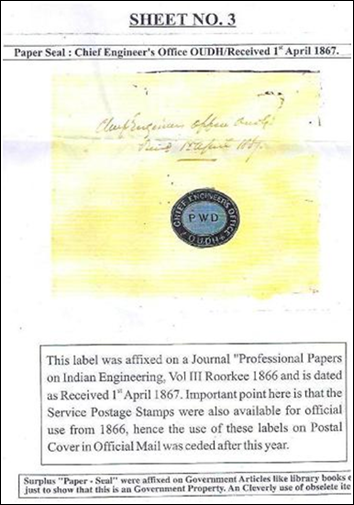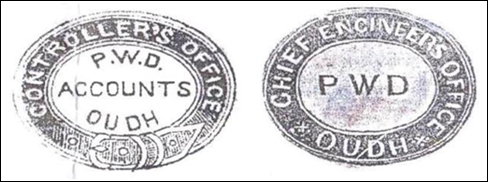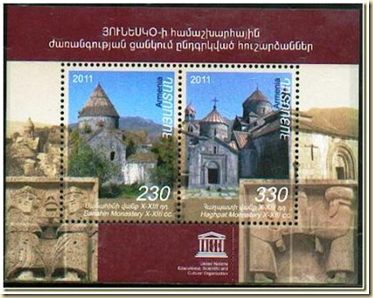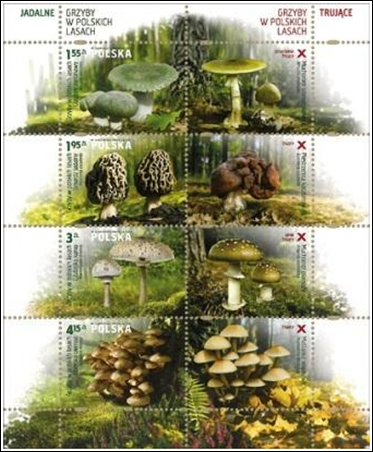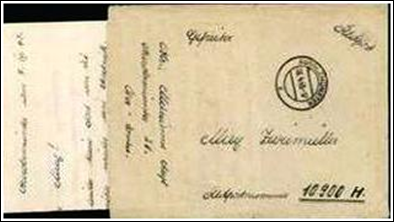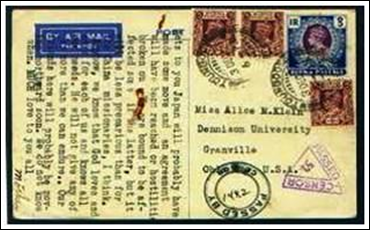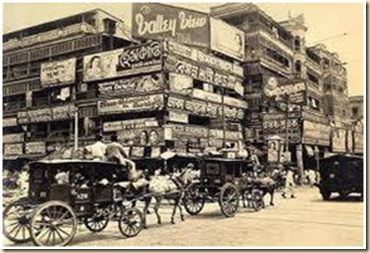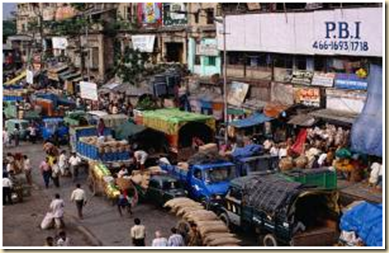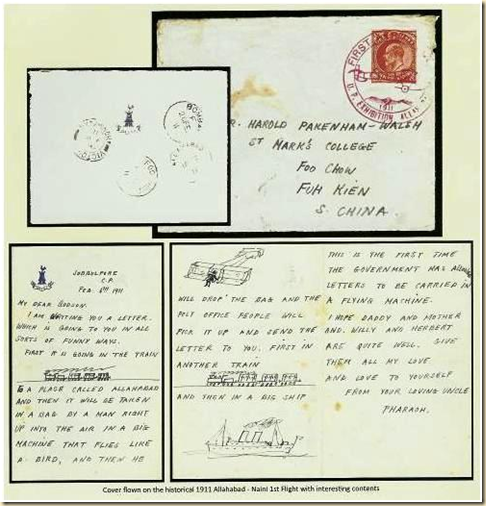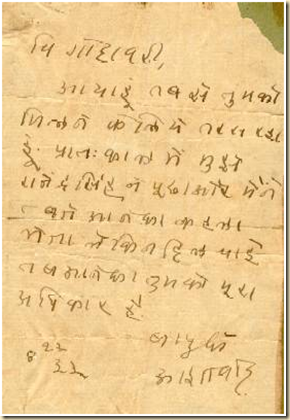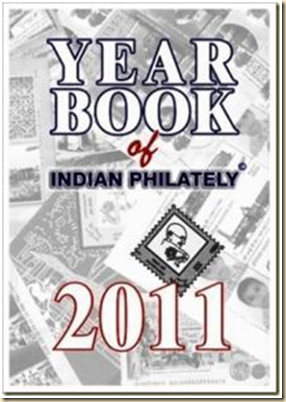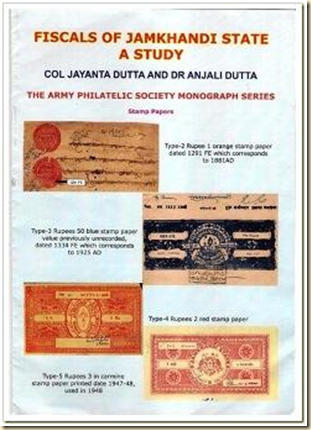Sport for Peace - Paralympic Games 2012
29 Aug – 9 Sep 2012 , London
Date of Issue : 17 August 2012
Shimla September 2012 Vol. V Issue # 57
Monthly e-Stamp Bulletin Edited by Jeevan Jyoti for free circulation among philatelists
Readers are requested to send reports of philatelic activities in their area for publication. Short write ups by the readers about their journals, societies, publications and philatelic requirements can be sent for inclusion in this bulletin to j.jyoti9@gmail.com or rainbowstamp2008@gmail.com and by post to –
Jeevan Jyoti, c / o Mr. Ajay Srivastav, CCF, GHNP & Pin Valley National Park, SHAMSHI, Kullu -175126. (H.P.) India
Note- This bulletin is only for circulation among a limited group of philatelists without any commercial purpose. The bulletin will be sent to the readers only on request. Those who wish to receive it regularly please reply giving the name of your city / country with the subject SUBSCRIBE RAINBOW
Dear Reader,
Here is September issue of Rainbow on your screen with articles on a variety of subjects. In this issue I discuss here the most burning issue of philatelic community today “ The Communication Gap between National Commissioner and Exhibitors” . Here is the latest instance for you to review…..
Just wish to know from my Indian Readers if they are participating in SHARJAH 2012 ??? There was no publicity or news about this exhibition anywhere. I came to know about this exhibition through Net surfing as I saw the website of SHARJAH 2012 I found the last date was already over still I sent an email to the commissioner to enquire if the entries could be sent after last date since the philatelic community was not informed anywhere about this exhibition but I received a return email from the national commissioner that the date was over. I discussed the matter with a few PCI office bearers and some senior philatelists who too agreed to the fact that the proper information and wide publicity should have been given well before the last date which probably was not given.
Everyone who is eligible to participate in the exhibition should be given a chance to apply . Today sharing of information is no problem as the electronic media is very active and there are several popular sites and blogs which are updated every day with latest info. Then why some of the commissioners (Not all ) do not circulate the news to the philatelic community. It means that either it is negligence on the part of commissioner or it is all fixed whom to avoid and whom to give entry. It is high time for the concerned authorities to look into matter and take necessary action that in future proper publicity is given to the exhibition through popular websites and releasing a press note to the philatelic societies and editors of philatelic journals at least 20 days before the last date of submitting entry forms. So that exhibitors can send entry forms timely !!
This is all for this month….More in Next Issue…Till then ….. Happy Collecting !!
- Jeevan Jyoti
Contents
· From the Desk of Naresh Agarwal
· Recent Indian Issues
· In The News
· Interview
· Beginners’ Section
· Specialized Section
· New Issues from Other Countries
· The Lighter Side
· Philatelic Clubs and Societies
· Blogs & Websites on Philately
· Literature on Indian Philately
· New Philatelic Publications
· Current Philatelic Magazines – Newsletters
 From the Desk of Naresh Agarwal
From the Desk of Naresh Agarwal
SHARJAH - 2012
SHARJAH2012, 28th Asian International Stamp Exhibition to be held on 20-25 November 2012 at Sharjah is the one which was not known to most of the Indian Philatelists who were eligible aspirants and participants for the show. The reason being its least rather no publicity in any of the media or medium in India. The reason is either known to the organizers or to the PCI and its recruited honorable commissioner.
The unsatisfactory working of old aged commissioners, a few months ago was a burning issue and again another ill functioning of either its commissioners or PCI itself has put PCI in to the spheres of questions. The news of SHARJAH 2012 was published in blog of Rainbow stamp club on 23.08.2012 informing Indian philatelists about the exhibition. It was probably for the first time that the publicity of this show was done in India in any of the journal or in any way, so to say.
After reading the news some of the philatelists including myself inquired about the show and showed their willingness to participate from the commissioner but no reply was given even on repeated mails. Even the secretariat of organizers failed to respond. What does this mean? What is all this happening? The matter was also brought in to the notice of office bearers of PCI by one of those who just kept mum or tried to protect the matter setting another example of poor and irresponsible working of PCI or its commissioner who does not have time to reply and where as it was his duty to see that maximum of Indian philatelists get chance to participate in the show.
Let’s review and try to understand the situation. Primarily is it PCI which should be questioned for all this or the commissioner should be asked about why the matter was not brought in to the notice of Indian philatelic fraternity and Indian philatelists in a proper way so that it reached maximum of the philatelists. I feel it is primarily the duty of PCI to see that any exhibition is thoroughly and regularly publicized so that its information reaches all the corners of India well in time. There are various modes of publicity such as press release, e-magazines and journals, information to various philatelic societies, information through philatelic bureaus, information to the previous participants of National and International level (details of whom is supposed to be with PCI), etc etc…
Now, if we think about commissioner’s action, it is felt and some questions come in to mind such as :
a) Whether PCI has proper control over commissioner’s action apart from his selection?
b) Whether PCI has given any proper guide lines to commissioner in this respect or may be the commissioner is free to accept any guide line, if given to him?
c) Whether commissioner has been authorized to contact only those philatelists whom he wishes to…?
d) Whether out of all the eligible exhibits, the commissioner is free to select any one’s exhibit whom he wishes to. This means either he is competent to judge (or have prior information) which exhibit is suitable for particular exhibition. But one must appreciate that the commissioner should have whole information about all eligible philatelists in the country ?
e) We understand and wish that the commissioner should represent his country with as much exhibits as possible because that will give maximum philatelists opportunity to participate but it appears that who, whom, how and how many are all at the will of commissioner.
f) It is felt in general that nears and dears are those for whom commissioner cares.
g) Whether by forwarding limited entry forms to organizing committee, causing limited acceptance of entries, a commissioner who represents a country as ambassador acts just as a tourist who wishes to participate / visit an international show at the cost of philatelic fraternity (if he are paid by PCI or FIP or FIAP) as he desires to take minimum load of exhibits and so the minimum burden which is against the pre-requisite qualification criteria of a commissioner which states that only that person can be selected as a commissioner who has strong will to give voluntary service ?
h) It is felt and expected that a commissioner should collect maximum information, update the local philatelic fraternity and see that maximum philatelists know about the show and apply giving opportunity to maximum eligible aspirant.
i) It is true that only a few applicants only can be given opportunity to participate by acceptance of entry forms by organizers but there should not be restriction to apply at least.
j) Whether commissioner is supposed to give clarification of primary selection and rejection of any application form to the organizing committee ?
Anyway, the matter needs serious thought, consideration and strong will to look in to the working PCI and the commissioners. PCI should also keep transparency in its functioning.
We must not forget, PCI has been formed and authorized to check interests of all Indian philatelists and not of a handful philatelists. Secondly, its main motto is to promote philately both in the country and Internationally. Is it doing it properly ?
We need to come out and speak….knock… ask….and if possible try to…. reshape BUT all in right spirit and right manner…….. because ultimately PCI is ours. The executive body is formed out of our group.. the commissioner are none other than our brothers….
We must accept the fact that “change is the law of nature” .. change for good….change for betterment.. change for promotion and development…
- Naresh Agarwal : email : nareshkumar1992@yahoo.co.in
Recent Indian Issues
· 16 May 2012 Karpoor Chandra - Rs 5
· 17 May 2012 M.B.Kadadi – Rs 5
· 27 May 2012 800th Urs festival of Dargah Sharif Ajmer – Rs 20 & Rs 5 + MS
· 20 June 2012 Wall Paintings – Rs 5 & Rs 20 + Sheetlet
· 25 July 2012 London Olympics 2012 – 4 stamps + Miniature sheet
· 26 July 2012 50 years of Customs Act - 1962.
· 31 July 2012 Durga Prasad Chaudhary – Rs 5
· 4 Aug , 2012 Armed Forces Medical College - Rs 5
· 29th August 2012 Husain Ahmad Madani – Rs 5
Recent Special Cover and Postmark
18 June 2012 – Special cover on Jainism on the occasion of 24 Jinalay Pratishtha Mahotsava, Jain Dadabadi, Agra.
27 July 2012 OLYMPHILEX INDIA 2012 London Olympics 2012 , Bangalore
28 July 2012 Biodiversity
View : Special Covers 2012 by India Post
In The News
The Emirates Philatelic Association is going to organize the 28th FIAP Asian International Stamp Exhibition (Sharjah 2012). The Exhibition will be held at Mega Mall, Sharjah, United Arab Emirates from 20 - 25 November. It will be a 6-day exhibition includes all FIP/FIAP classes.
The Exhibition has endorsed by FIAP at their executive committee meeting held on 27 April 2012 in Kuala Lumpur, Malaysia. It carries with the FIAP Patronage.
Mr Rajan Motiram Jayakar (email : rajanjayakar@yahoo.com ) is the National Commissioner for India . Mr V S Dsatur is member of Jury and Mr Rajesh Kr Bagri is member of Apprentice Jury from India.
Best Maximum Card Competition (Created during 2011)
Maximaphily is the most beautiful and exiting way in stamp collecting. It is one of the eleven recognized classifications of Philately. All types of visitors in the F.I.P. exhibitions find it very attractive, because of the beautiful illustrations on postcards and because the purpose of Maximaphily is to collect exclusively Maximum cards.
A Maximum card is made up of three elements:
1. The postage stamp. 2. The picture postcard. 3. The postmark.
The three elements are joined together in a fascinating way conforming to the following very precise regulations adopted by the International Philatelic Federation (F.I.P.). The meeting of the above three elements having a close visual relation constitutes the Maximum card .
The postage stamp
- It must be in perfect condition.
- Only one postage stamp should be affixed on the view side of the picture postcard. Before 1978, when the “International statute of Maximaphily” was approved, maximum cards showing several postage stamps are tolerated, if one or more of those are concordant with the picture on the postcard.
- In the case where a postage stamp has multiple, secondary or partial subjects, each subject must as far as possible, be dealt with separately.
- The postage stamp (or the souvenir sheet it belongs to, if it is stuck on the postcard) must not exceed a quarter of the postcard area.
- When the same subject is spread out on several se-tenant stamps making a panorama, the set can appear on a single postcard. However, when a subject is isolated on one of the se-tenant stamps only the one on which the treated subject is illustrated should be affixed to the postcard.
- The use of an illustrated postal prepayment impression dispensed by automatic vending machines, affixed on the view side of the postcard, is allowed.
- In general, abstract or symbolic subjects do not suit Maximaphily and are excluded from its field.
The picture postcard
• The picture postcard must be, if possible, on sale before the issue of the stamps or if it has been specially published, it must reproduce an existing document.
• Its size must conform to dimensions accepted by the “Universal Postal Convention”. However, postcards of square or rectangular shape available on the market are accepted, provided that their size allows them to be laid out on a sheet to the A4 format (210 x 297 mm) at a rate of two per sheet. Out of respect for its designer, it is strictly prohibited to reduce the size of a postcard by cutting it.
• The picture must offer the best possible concordance with the subject of the postage stamp or with one of them, if there are several. Mere reproduction of stamp design on a picture post card should be avoided.
• The picture must emphasize the subject of the postage stamp.
• The postcards on the market are accepted as they are. They can have margins and a text directly connected with the subject. Old postcards can have on the view side an area for correspondence. With the exception of these old postcards, the larger the picture is, the better the quality of the maximum card is considered to be.
• All postcards fully reproducing the postage stamp, that is to say with perforation, face value, country name, are forbidden.
• Postcards with multiple pictures as well as ones with holograms are forbidden.
What about the postmark and the time of cancellation?
The pictorial design of the cancellation and the place of cancellation (name of the post office) should have a close and direct connection with the subject of the stamp and of the picture postcard, and its date should be within the validity of the stamp and as close as possible to the date of its issue.
What is "appropriate material"?
The Maximaphily items should conform to the principle of maximum possible "visual" concordance between: The postage stamp, the picture postcard and the postmark. Special attention must be paid to the observance of the three concordances: of subject, of place and of time.
• The concordance of subject is the most important condition to characterise a Maximum card, e.g. the best concordance between the subject of the stamp and the illustration of the picture postcard.
• The concordance of place requires a connection between the name of the place or the locality written in the postmark and the subject of the stamp and the card.
• The "first day cancellation" can only be used when it is in accordance with the above mentioned condition
• For monuments, landscapes and sites the only place giving the required concordance is the one where the monument, the landscape or the site is located.
What is not appropriate material ?
Any other material which does not conform to the above mentioned regulations is considered as not appropriate material for this classification of Philately.
Furthermore, the following items cannot be used for maximum cards: collages, cut-outs, private photographs on photo paper, colour or black and white photocopies, photo-montages, drawings, documents specially devised for the stamp issue to be printed privately on photo paper thanks to a computer, digital printouts, illegible postmarks, bigger size or different shapes of postcards: only square and rectangular formats are allowed; all others are excluded.
World Competition Best Maximum Card created in 2011
FIP Maximaphily Commission organizes a Best Maximum Card Competition every year. We at India are also participating this year in this competition.
For Indian participation
All those interested in participation are requested to send their entries to me by email at ajaymittal1957@gmail.com at an earliest possible and by post also at my address given below.
Last Date for sending entries : 15 September 2012
Best three cards will be selected by an expert group and send for participation in the world competition. A small information about the printing process used quantity printed and concordance between the three aspects of maximum card (i.e. Picture Post Card, Stamp and Cancellation) may also be sent along with the card. All entries sent for competition will not be returned.
We are compiling a catalogue of the Indian Maximum Cards issued by Individual collectors. Kindly send me details with scans by email of the cards issued on Indian stamps by any society or individual collectors.
All are requested to kindly send a high resolution scan of the cards issued by them till date with a small information about the card and quantity printed. If available for sale the price of the card may also be mentioned.
As it is not yet decided the location of the Next Competition of the Best MC. There is a possibility that the FIP Maximaphily Commission can first publish all the National Selections for this Competition at their FIP Maximaphily Commission website and then request all National Delegates to submit their votes by email or letter.
Any clarifications and/or suggestions regarding FIP Rules and regulations of Maximaphily are also welcome.
- Ajay Kumar Mittal
FIP Maximaphily Representative from India
email : ajaymittal1957@gmail.com Postal address : D-57 South Extension part-1 New Delhi-110049. Phone : +91- 9811032311
Forthcoming International Exhibitions
THAILAND2013 - Word Stamp Exhibition
THAILAND 2013, International Philatelic exhibition will be held in Thailand from 2 to 14 August 2013 in Bangkok, under the patronage of FIP. The World Philatelic Exhibition will take place from 2 - 14 August 2013 at the Royal Paragon Hall 1-3, 5th floor, Siam Paragon, Bangkok. Mr. R D Binani as Commissioner for India, his address :33-B Rowland Road, Kolkata 700 020 E mail : binanipm@gmail.com Mob:9830073058
AUSTRALIA 2013 Melbourne / Australia 10.-15.05.13 www.australia2013.com
Australia 2013 - Home www.australia2013.com
THAILAND 2013 Bangkok / Thailand 02.-08.08.13 www.thailand2013.com
BRASILIANA-2013
WORLD STAMP EXHIBITION - It will be held in the city of Rio de Janeiro, Brazil, from 11th to 17th November, 2013. It will be organized by the Brazilian Enterprise of Posts & Telegraphs (ECT) and the Brazilian Federation of Philately (FEBRAF), with the patronage of the Fédération Internationale de Philatélie (FIP). The official website is under construction and will be released shortly.
http://www.brasiliana-2013.blogspot.com/
Mr. Rajesh Kumar Bagari nominated as Commissioner for BRAZIL 2013.
email : rkbagri.indipex2011@gmail.com or bagri@iname.com
Interview
In this issue I am pleased to publish interview of renowned philatelist of India , Mr Ajay Mittal who has served as National Commissioner in several International Philatelic exhibitions like Bangkok 2010, Israel 2008 etc. He is member of Maximaphily Commission of FIP. (International Philatelic Federation). He played a key role in organizing two month stamp exhibition at Red Fort with ASI. Mr Mittal has several awards and Gold Medals to his credit in a number of International exhibitions for his exhibit on Indore State. Recently at INDIPEX 2011 he got Gold Medal for INDORE state (Traditional Philately class. He is author of “Stamp Collecting –A Fascinating Hobby", a book on General Stamp Collecting and is appreciated by the philatelic community in India and abroad. He is working on series of articles and a Book "Postal Systems of Indore – A Princely State of India" A research book with a study group of India Study Circle, U.K.
This interview was conducted by Mr Naresh Agarwal. Here Mr Mittal answers to many questions which readers would like to know. My sincere thanks to Mr. Mittal for sharing his views with the readers of Rainbow. - Editor
 Mr. Ajay Mittal, a businessman, needs no introduction to the philatelists in general as he has been enjoying and serving the philately and philatelists since 1978 through introduced to this hobby in 1969. Mr. Ajay member of various philatelic and non-philatelic societies and associations, a successful organizer of various high level philatelic events, pioneer of various philatelic classes such as Maximaphily and a man involved constantly in development and promotion of philately at International level. He is one of the pioneer members of PCI, the apex body of philatelists in India and is in its executive body. He has served philately as national commissioner for various international shows outside India. He has a long list of philatelic interests in which he excelled also. Regarding his philatelic achievements, there is also a long list which is headed by a good number of Golds and Large Vermeil awards at Various International shows especially for his various collections on various Indian States Revenues and postal History. Mr. Ajay is a gem of a person and of course a gem of a philatelist too. Rainbow has the pleasure to publish his interview giving his valued opinion and guidance to the philatelists.
Mr. Ajay Mittal, a businessman, needs no introduction to the philatelists in general as he has been enjoying and serving the philately and philatelists since 1978 through introduced to this hobby in 1969. Mr. Ajay member of various philatelic and non-philatelic societies and associations, a successful organizer of various high level philatelic events, pioneer of various philatelic classes such as Maximaphily and a man involved constantly in development and promotion of philately at International level. He is one of the pioneer members of PCI, the apex body of philatelists in India and is in its executive body. He has served philately as national commissioner for various international shows outside India. He has a long list of philatelic interests in which he excelled also. Regarding his philatelic achievements, there is also a long list which is headed by a good number of Golds and Large Vermeil awards at Various International shows especially for his various collections on various Indian States Revenues and postal History. Mr. Ajay is a gem of a person and of course a gem of a philatelist too. Rainbow has the pleasure to publish his interview giving his valued opinion and guidance to the philatelists.
Mr Ajay Mittal may be contacted at email : ajaymittal1957@gmail.com
1. As we see philately is very close to your heart but please tell us when you gave your heart to philately. Your introduction to philately and how the love for philately developed?
I started collecting stamps when I was 14. I used to see some of my friends collecting stamps and specifically one Amit Rudra who was living next door used to show me his collection and try to create some interest in me for stamps. I started my collection with taking out stamps which were fixed on the letter/mails we used to receive in daily post. I found stamp collection to be very colorful and enjoyable hobby. Initially I used to collect almost all types of stamps because of my limited knowledge on the subject. Then I started discussing philately with other collectors. They guided me and taught me how to collect stamps. Thereafter, I started collecting stamps subject wise. This augmented my interest towards philately. That is how I got fascinated towards philately. Now after completing almost 40 years in philately, I consider myself to be one of the finest philatelists in the country.
2. What are your major interests in the field of philately? What else you have received from philately other than philatelic pleasure?
My main interests in philately are:
1. India Princely State Indore Postal Collection (Traditional Group)
2. India Princely State Indore Revenue Collection (Fiscal Group)
3. India Princely State Kishangarh Revenue Collection (Fiscal Group)
4. Indian Maximum Cards (my first love with serious philately)
5. I am collecting/studying fiscals of many princely states of Central India and Rajasthan.
Apart from my above exhibits/collections, I possess collections of Dhar, Bhopal and Rewa and while compiling these collections I had to study a lot. This study and research has given me ample knowledge regarding the various postal systems in India.
3. How do you see the changes in philately which started merely from a hobby of stamp collection to specialized research oriented subjects in the field of philately? What do you think about future of philately?
A hobby without proper knowledge on the subject will be of no significance. It was my inquisitiveness, awareness, curiosity about stamps, their history, printing, circulation etc. which pushed me into this fascinating world of stamps. Philatelic Societies/Associations play an important role. I remember when I joined ‘We Philatelist’, a Stamp Collectors Association, in 1976 which was also the turning point in my philatelic life. It was my introduction to organized philately. Late Brig. D.S. Virk, Late Shri G.B. Pai were the stalwarts of that period and they regularly came in those meetings of ‘We Philatelists’ to share their experiences. Indipex-1973 was my first exhibition which I visited but only as a mere spectator. Dakiana-1976 was my first stamp Exhibition as a collector/exhibitor which also taught me how to make an exhibit. While writing my first book Stamp Collecting a Fascinating Hobby in 1988 I got inside of philately. Late Mr. D N Jatia, and Late Mr. M.G. Pittie were other senior philatelist who were always my source of inspiration.
4. Philately is a hobby which gives pleasure but it also becomes matter of resentment and despair when it comes to the competition. What do say about competition in exhibitions? Is a competition is competition in true sense?
There are two options with the collectors one is to sit in spectator’s gallery and enjoy the game and the other is by entering into the play area and play the game. I disagree a bit with the statement that competition brings resentment or despair. The problem of resentment starts when one doesn’t study the rule book clearly and develops high expectations from the competition. These competitions play an important role in development of the hobby. The good thing about philately is that in this hobby everything is available in black & white. Wherever there is a doubt you can consult the rule book. Some resentment or despair may go hand in hand with some participants as is seen in all other sports or competitions. In my opinion competition gives you a chance to improve your exhibit on a regular basis.
Local Societies can play an important role in this by organizing workshops, by inviting senior philatelists as guest speakers, displaying of award winning exhibits etc.
5. Recently a 2 - month stamp exhibition was organized by ASI with your great efforts at historic Red Fort in Delhi to project and promote Tourism. It was indeed a new concept and has given new directions to philately. Kindly throw some light on the show and its impact on philately and other fields of society?
The exhibition “Stamp of the Past : Indian Heritage in Philately” was organized as a part of celebrations of 150 years of ASI in India at Quarter Guards at Red Fort, New Delhi from 18thMay 2012 to 17thJuly 2012. The theme of the Exhibition was “Indian Heritage and Culture through Stamps”. The exhibition was inaugurated by the Hon'ble Minister of Culture Ms Shailja on 18thMay, 2012.
“Stamp of the Past : Indian Heritage in Philately”
India post participated with 22 frames exhibits of stamps issued on Indian Art & Cultural Heritage, Monuments, Museums, Paintings etc. India Post provided personalized stamp counter also for the entire period of 2 months at the venue.
Six philatelists including me participated by exhibiting their collections in this exhibition namely; Jeevan Jyoti, Kullu; Pradeep Kumar Mallick, Patna; Timir Rajnikant Shah, Vadodara; Molay Sarkar, Kolkata and Nidhi Mittal, Delhi.
The exhibition was very well organized and was attended by more than 2 lakh visitors. It was pleasure to work with nice and experienced ASI officers in this exhibition. These types of exhibitions are the best way to introduce the world of philately to the people who are not aware of philately. While speaking on the valedictory function DG ASI has assured a series of such exhibitions in various parts of the country which will create awareness amongst youngsters as well.
Here, I would like to request other concerned Ministries and Govt. Departments to organize exhibitions which can be on different themes such as Environment, Sports, Energy, Freedom Struggle, Gandhi etc..
6. There is no strong Philatelic Federation in our country at present. Why is it so? You are a senior member of Philatelic Congress of India, the apex body formed to check interests of philatelists and promote philately in India. What major issues for promotion of philately are in hand of PCI today?
No, we do have National body like any other sport in our country. Philatelic Congress of India is our National Philatelic Federation(PCI). However, due to the vested interests of some of the members of the federation, the federation is facing some legal issues. These legal issues are going on since 2002 and till date Indian Philately has suffered a lot. These legal issues are the hindrance in working of PCI for promotion of philately in the country for the time being.
7. Internet is a boom as it has made search, accessibility, purchase and procurement of philatelic material easy. But do you think it is truly a boom for philately as it has shifted the interests of Indian Stamp Dealers who have now limited direct connectivity with stamp collectors. Cost of material has turned into Dollars / Euros from Rupees. Where will this lead to?
Going with technology is always good and it helps in the progress of hobby. Even the Indian Stamp dealers are enjoying this e-philately. They can easily sell and purchase the stamps and other related material. For example, earlier, they have to go and physically show the item to sell but now they can send the e-copy of the item and deal accordingly. Yes, in this system collectors are not able to receive personal advices from the experienced stamp dealers to improve on their collections. As far as the cost of material turning into Dollars / Euros is concerned, value of classic material was always calculated in foreign currencies, yes now common material is also dealt in these currencies and I found it both ways for Indian Collectors good for sellers and sad for buyers. This will reduce the rate difference in National and International markets.
8. Thematic philately is fast developing today. Inclusion of new variety of material has made it more interesting and loving. What do say about this when look in to other fields of philately?
Thematic philately was always popular amongst the philatelists as in this the collector can enjoy the theme of his or her own choice. It is for sure that thematic philately gives you more enjoyment and it is easily understood by non-philatelists. But seeing the results of competitions we find that higher level medals are missing in this form of philately. While attending a seminar on thematic philately in Tel Aviv, Israel it was informed that exhibits from non-European countries are not getting higher medals because of lack of balance between Thematic and Philatelic treatment of the exhibit. Reading books on the chosen subject is important. By organizing seminars regularly we can improve the standards of thematic philately.
Maximaphily is also getting popular among collectors these days.
9. India post organized a very good number (too much) of stamp shows at Distt. and Regional Level in last two years for promotion of philately which resulted mainly in poor attendance and poor displays. Quality exhibitions are demand of the time which truly serves the purpose. Your comments?
India Post is playing its role by organizing regular stamp shows but the problem is with their advisors. They are not playing their role properly. Local societies and senior philatelists can play an important role in this. Before organizing a stamp show there must be a series of workshops on How to Exhibit? What is good or what is bad for the health of their exhibit? What are the prevailing rules of exhibiting? In absence of all these information, quality of participation goes down. Here the role of Jury is also important. Critic sessions are important event where exhibitors can know about the areas where improvement is required. A biased jury is always harmful for the collector who is being benefitted by his action. It was really a matter of worry to see the level of performance of Indian Exhibits at the World Stamp Exhibition Indipex-2011held in February 2011in New Delhi.
10. Your suggestions and appeal to young and new philatelists.
Whenever I tell someone about my hobby of Stamp Collection, the common reaction I get is that once upon a time he was also collecting. Why once upon a time and not now? The reason is they started collection in a haphazard manner and left the hobby in between because it was not at all interesting neither organized one. Even, they were not lucky enough to get some guidance from senior philatelists or some philatelic club or society. The need of the hour is to collect properly and share your knowledge with others. Dissemination of knowledge is the probably only way to promote this hobby. I will only say do not collect in quantity but collect quality. This will enhance their knowledge on philately. Reading more on the subject, joining a philatelic society near your place and regular visit to exhibitions are the key to success.
11. Of late, voices of dis-satisfaction from the participating philatelists on working of National Commissioners are heard who provide a voluntary but a responsible service, as they act as ambassador of the country they represent and otherwise also carriage, display and return of exhibits is a matter of great responsibility. Sometimes they are unable to communicate properly with the exhibitors. Don’t you think, inclusion of young and energetic philatelists well versed with latest, fast and healthy communication techniques will help improving the overall scenario?
In my opinion inclusion of young and energetic philatelist in commissioners list is not the solution as this is a job full of responsibilities and trust. Important here is to train the commissioners for their assigned job. The past experience of the commissioners and the trust of the exhibitor with the commissioner is important here. The young and energetic philatelist might have better communication techniques but they lack experience in the field which is also important. For this FIP has defined some role and responsibilities of National Commissioner which requires a reasonable knowledge of all areas of philately also apart from their skill to communicate with the organizers and fellow commissioners during the exhibition. PCI also have made some guidelines where one important item to note is that for being a commissioner the philatelist must have visited abroad in an international stamp exhibition as an exhibitor.
Memorable Moments with Philatelists
From L to R Late Mr MG Pittie., Mrs Pittie,Mrs Nidhi Mittal, Mr Ajay Mittal, Mr AR Singhee & Mrs Singhee
12. Last but not the least, in our country the information about the International exhibitions is not circulated by the National Commissioners. Most of the commissioners (Not all) select the exhibitors of their own choice and intimate them about exhibition. Do you think this is justified? Many eligible candidates are deprived of participation. What is your opinion in this regard? Do you think this practice must be avoided and a proper press release should be issued one month before the exhibition?
Yes some of the National Commissioners in India are not playing their role properly resulting less participation and lower / lesser medal tally. The practice should be that the National Commissioner should inform the important schedules and criteria of participation in the exhibition through various philatelic associations. Sharing the information through electronic media is another easy way to inform the probable exhibitors. Those interested to participate in the exhibition may contact the commissioner and request him/her for the necessary forms etc. Everyone who is eligible to participate should be given a chance to apply if interested. PCI should also share the information about the forthcoming exhibitions, last dates of submission of forms and the contact details of the respective commissioners for these exhibitions. The role of the commissioner is to send maximum number of entries which are eligible, from the country and rest lies with the Exhibition authorities about final acceptance.
Forthcoming International Exhibitions in the year 2013 are :
i. AUSTRALIA 2013 Melbourne / Australia10.-15.05.13 www.australia2013.com
ii. THAILAND 2013 Bangkok / Thailand 02.-08.08.13 www.thailand2013.com
iii. BRASILIANA 2013 Rio de Janeiro/Brazil 11.-17.11.13 http://www.brasiliana-2013.blogspot.com/
Beginners’ Section
The GB Victorian Period stamps
The GB Victorian Period stamps consist of the following types:
· The Line Engraved
· The Embossed
· The Surface Printed
The Line Engraved
The Printing Process: The first postage stamps in Great Britain, from the 1840 imperforate Penny Black to the 1870 perforated 1½d rose were printed using the Line Engraving printing process.
The design is recessed into the printing plate which is then covered entirely with ink, and worked into the recess after which the surface of the plate is wiped clean. A sheet of moistened paper is then laid on the engraved surface. Under pressure, the paper is forced against the recessed area containing the ink and the design is reproduced on the paper.
Imperf’s (Imperforations) :
- The one Penny Black ( issued on 1 May for use from 6 May 1840).
- The Two penny Blue a contemporary issue with the Penny Black .
Watermarks : Small Crown, Large Crown
Postmarks : Maltese Postmark & varieties.
The above stamps can be further categorized into Plates, Shades, Alphabets, Dies and Perforations.
The One Penny Red/Black and Two Penny Blue stamps are a great part of one’s GB collection, without which it would be incomplete .The particular aspect of the different Plates that exist for these stamps is a study of its own for GB collectors and may take a large part of their time.
To be contd….
- Julian Fernandes : email : julian.destiny@gmail.com
Philatelic knowledge
THE ANATOMY OF THE R.M.F.M. METER MARKS
The India Post has introduced Remotely Managed Franking Machines (RMFMs) in place of existing Electronic Franking Machines with effect from 16.8.2010. Meter Marks or the frankings of the new machines are in Blue colour instead of the usual red and indicate class of article, pin code, authentication code, date of frank, mail item number, license identifier number,frank value and a 2D bar code.
These are printed on the articles using the Inkjet technology, unlike the older machines fitted with impact printing/technique of franks. These are duplex marks having two parts, first details part on the left and second denomination part, on the right. Different components of these marks are explained hereunder :
1. Class of Article
P for Postcard, ILC for Inland Latter Card, L for Letter, BP for Book Post, RL for Registered Letter, SP for Speed post and so on.
2. Pin Code of the Originating Post Office
3. Date of Meter Franking
4. Authentication Code
The authentication code is seen in three settings in these meter marks. First is all numbers, the second is all alphabets and the third is a hybrid, having an alpha-numerical setting. It uses Hexa-decimal format i.e. formation with A to F alphabets and 0 to 9 numbers. The code contains an info-mix of License Identifier, Item Number, Frank Value, Date, Time of frank, Pincode and authenticates the frank. It is considered virtually unbreakable.
5. Mail Item Number
6. 2D Barcode
2D bar code contains important information encoded therein viz ascending and descending meter readings, class of article, number of items, pin code number, value of frank and license identifier number. 2D bar code can also be scanned to check the genuineness of the frank impression.
7. Sovereign Mark
8. Denomination (Value) of the Meter Mark
9. Users' License Identification Number
This number also has two parts, first a letter (9a), which denotes the initials of the original Equipment Manufacturer i.e. 'F' for Francotyp Postalia, 'N' for Neopost and 'P' for Pitney Bowes and after that (9b), six numeric digits which indicate serial number of the machine, which has made the mark.
- Madan Middha : email : madan_middha@yahoo.co.in
Specialized Section
FANCY CANCELS OF USA (Pt. I)
© Dr. Satyendra Kumar Agrawal
For any Thematic Exhibitor, Us Fancy Cancels are an important philatelic element needed for their exhibit at advanced stage. The wide varieties of classics as well as modern Fancy Cancels always have something to offer for them. What are these Fancy Cancels, how originated and why they are important for any advanced stage exhibit, all have an interesting story to tell. Any serious philatelist can easily pursue America's fancy cancels for they exist in a virtually countless array of designs and in all price ranges.
US Fancy Cancels can be divided in two parts, the 19th century Classics and 20th century Modern. They ruled the periods of 1850-1890 and 1920-1930 respectively. Fancy Cancels of later period are more desirable due to their fanciful designs and themes suited for wide variety of Thematic Exhibits.
19th Century Fancy Cancels
The American provisional postal system was first established in 1775 in defiance of the British system. Benjamin Franklin was appointed Postmaster General, and given charge of organizing a postal system quickly.
In the early days of the US postal system, most post offices were located inside banks, taverns and stores. Employees of these establishments served as postmasters and postal clerks in addition to performing their usual duties. Only in the largest cities were buildings, or parts of buildings, dedicated solely to postal work with full-time personnel. In the early years there wasn’t much official postal equipment either. Most correspondence was processed and marked by postal clerks using pen and ink.
As the US postal system matured, additional hand stamps were acquired by post offices to eliminate the time consuming need of manually marking letters.
In 1847 the first US postage stamps were made available to customers at post offices. To prevent their re-use, some type of “cancel” or “kill” needed and one of the first methods of cancellation was with pen and ink.
Since these ‘Manuscript cancels’ were time consuming to apply a number of offices began to use whatever was at hand, the most common were "PAID",“FREE”, “STEAMBOAT”, “ALL PAID”, “OVERLAND”, “WAY” and numerical Rate hand stamps left over from the pre-stamp era whose original purpose was not to cancel postage stamps.
A clever and very efficient idea of defacing the stamps using twice the CDS (Circular Date Stamp), once for identifying the origin of the post office and again to deface the stamp, can also be found on covers of this era.
Many clerks started cancelling the stamps using cork bottle stoppers dipped in ink. These worked well, but would tend to blot out the entire stamp making it difficult to check the denomination.
To overcome this problem, clerks began to carve a groove across the middle of the cork, making two semicircles. Further enhancements included two grooves cut crosswise (the four-piece "country pie"), and then two more, for the eight-segment "city pie", and notches cut out off the outer edge to lighten the cancel further.
The carving process seems to have sparked the creativity of clerks across the country, and given birth to Fancy Cancel.
One very common hand stamp used for many years, to deface the stamp is known as “target cancel”, a series of concentric rings. Most of this hand stamps where professionally made by local engravers and sold to post offices.
Another in this series is known as the “grid” cancels. Generally, it can be described as a series of closely spaced lines, dots, squares, diamonds, or other shapes that form a grid-like pattern. Grid cancels were produced by postal employees; carved mostly from wood.
The ‘Geometric’ and ‘Star’ cancellations are large categories that include many designs not otherwise easily described. Some of the most elaborate geometric cancels were used to cancel high value stamps on foreign mail going from the New York City post office to overseas destinations. In the 1870's, clerks in the New York City Foreign Mail section produced some of the most beautiful—and very desirable—geometric designs which are practically unique to covers that went through the NYFM section of the city's General Post Office.
Now postal clerks took great pride in making and using distinctive cancellations and thousands of them including few postmasters, from small towns to large cities spent their leisure hours preparing their own unique cancel devices.
It was a whimsical sort of activity where illustrative cancels were crafted to reflect the ideas, opinions, events and society in general that were on the minds of the postal craftsmen.
Famous ‘Worcester Shield’ and ‘Shaking Hands’ cancels are good examples of this category.
Michelangelo of Fancy Cancels
Though the names of most of the carvers of these beautiful Fancy Cancels scattered in post offices all over USA, remained in dark but John W. Hill, Postmaster of Waterbury, Connecticut, the best known of these craftsmen cannot be forgotten for his imaginative & skilled creativity and master craftsmanship. He produced many different designs, over a fairly long period, from 1869 to 1886 carved from cork and achieved recognition even during his lifetime. He used each cancel for a relatively small number of times, making good examples scarce. His "Running Chicken" (perhaps a turkey) depicts a freshly hatched chick looking like chasing a fly appeared close to “Thanksgiving” of 1869, is the most highly-prized of all U.S. 19th century cancels. Today it sells for more than $100,000.It was in use for only a few days in 1869.
Other remarkable fancy cancels carved by him are related to Animals,
Bids, Fishes and Insects,
Flowers, Fruits &Vegetables,
Daily used objects and geometrical patterns.
He also has shown his craftsmanship in carving many human faces for preparing Fancy Cancels.
There are many other categories of fancy cancels not possible to cover all in a single article.
This era of fancy cancels came to an end in the 1890s, when the Post Office Department issued new regulations that postmasters could only use manufactured "killers" approved by them for the obliteration of postage stamps on mail
- Dr Satyendra Kumar Agarwal : email : rosephila@hotmail.com
INDIA’S UNIQUE SERVICE COVERS OF 1860 (!) WITH PAPER SEAL
- Er. Kailash Chandra Jain
The article by Sh KC Jain is an article on Postal History. Service stamps were introduced in 1865 in India. Prior to this, all official mails from the government offices were to be marked with the seal & signatures of the designated officer sending the mails. This “sign & signature” unit on the letters was known as official franking and were valid for carrying mails by the postal department without adhesive stamps affixed on them.
The paper seals mentioned in the sent article seem to be an extension of this franking, devised by some enterprising officers, to save time and express inventiveness; Controller of Accounts & Chief Engineer PWD, Oudh, in these cases. After the introduction of the Service stamps, these paper seals became obsolete and were used other ways like use on books indicating the proprietary of the governments on them. – Editor
Regarding this cover a short description was published in “India-Post” in February 2001 (Page 25-26), titled as “ OUDH Public Works Department”, narrating, “ I found a service envelope addressed to the Superintending Engineer P.W.D. OUHD, Lucknow, with an Oval Label affixed. This was used between 1854 -1865. After that period postage stamps overprinted O.H.M.S. were available. Here the use of the label for sealing the envelope is important. The envelope measures 248x98 mm. the length have been trimmed. At its rear opening flap is affixed an label, 38x33 mm, “Controller’s Office/P.W.D./Account/OUDH”. The outer ring and centre letter ring are black. But the back ground and outer ring letters are yellow.
The envelope is recycled from a printed sheet inscribed “On Her Majesty’s Service Only”. From Executive Engineer, Public Works Department at the bottom left, and ‘Division No……………..18……….’ at the top left. It bears a printed address ‘To/The Depty Commissioner……………’ All these detail were folded inside the envelope when it was reused.
Another label of size 36x30 mm was found affixed on a book and dated ‘Received in the Chief Engineer’s Office 1st April 1867.’ The background to the centre and the lettering of the outer ring are both in blue’:
These labels were shown at the twice size. But the photograph of cover was not published at that time. Now I am giving the scan of the both side of that cover as well as other label on book.
Some important references with relevant points relating to official mail of India are recorded below:-
A) Early Indian Cancellations 1854-1884 by W. Renouf.
District Post: - Adhesive Stamps were not used for correspondence dealt with entirely by district post agency. The annual report of the General Post Office for 1862-36 contains the information that a quarter of an Anna was levied on a private letter delivered by Central Provinces. We may doubtless assume that this was or become general rule. A small fee was obviously justifiable and proper. Letters which were passed on to the imperial Post office for transmission became liable to the usual Imperial Post Office for transmission became liable to the usual Imperial Postage Rate, postage being paid by the use of Postage Labels, except where letters were sent “Bearing”. It is possible that POSTAGE LABELS were available at some out offices of the District Post. But it seems probable that a material proportion of the District Post Letters were sent bearing (Unpaid).
B) Post Office Manual/Instructions to post Masters in Act XVII of 1854 (Published 1855) Page 52, Appendix, XXVIII & XVIX: -
For the first time “Service Letter” are defined in instruction No. 171, as under: -
171. Service Letters are letters relating to the public service, and for convenience allowed to pass under the signature of certain public officers without actual payment of postage
172. Service Letters will be treated in every respect as paid letters, except as regards the manner in which the postage chargeable upon them is to be accounted for.
173. All letters franked by duly authorized persons in the correct form* will received as paid and charged to the department to which the franker belongs. Each post office will account for the postage chargeable on the service letters dispatched…… Such letters must be addressed according to the format shown in Fig. 4.
1) On top of the form is written, “On Public Service Only.” while on envelope/cover of OUDH is written “On Her Majesty’s Service Only”.
2) There is no signature / designation of sender/dispatcher or office name on address side as per instruction for service letters in post office manual of 1854.
C) Substitution of a revised Scheme for franking of official letter for existing systems submitted to Governor General of India in 1864 AD. :-
This is a file No. 3327/1865 AD kept at Regional Office Bhopal, National Achieves of India, (N.A.I.). Contains 41 pages having important reports and A Memorandum to review the various proposals that have, from time to time, been made for altering the (then) existing system under which Government Service letters etc. are conveyed by the post without actual payment of postage.
Para 22 on page 5 from letter No. 1753 Dt. 8 Oct. 1861.
When the post office act of 1854 was introduced in October of that year, an attempt was made by the post office (in accordance with recommendation of the postal commissioners vide paragraphs 205 and 206 of their report) to keep the postage account of each office or Department, but it was found expedient to abandon it in may 1855, as too much work was there by thrown on the limited establishment of Post Offices, irrespective of speedy dispatch of the mails being interfered with and no real check or satisfactory view of the number, weight or postage of letters dispatched by individual offices or Departments resulting.
Some Important points from above file are narrated below:-
1) Under the sanction of the Government of India, Two Lists of Officers of different department were prepared, who had the authority to send letters without actual payment of postage. The number of officials who exercise franking powers, especially under list No. 2, varies constantly, thus the franking lists swelled continuously.
2) The service letters before closing of any mail were sorted into four divisions of Revenue, Judicial, Military and General according to the franker belongs to one or another of the departments named.
3) To obtain credit for the work done by it, the Post Office weighs the official covers in bulk, and makes a proforma charge of postage at the rate of Two and a quarter annas per tola.
4) There were acute difficulty to distribute this charge among the various officers sending service letters & also in keeping the account/realizing the charges by the post offices, especially in Non-regulated provinces.
5) The majority of Post Masters being unable to ascertain or too ignorant to form a judgment of the Department to which a large number of letters belongs to be debited for charges, work done by the post office. There is nothing outside to indicate the department by they have been dispatched by individual offices or departments, resulting.
d) Adhesive Wafer Seals :- By Edward Law
Whilist adhesive wafer seals are in many cases very similar in appearance to die stamped crests; they are distinct items and were produced for a different purpose. Envelopes, which had a been available but little used prior to 1840, because they incurred higher postage, came into use much wider use following the introduction of uniform penny postage in Britain in 1840. Initially the envelope was not gummed and they were sealed as the letter sheet had previously been sealed, with sealing wax or a simple paste seal.
The adhesive wafer, a small slip of paper with paste on the reverse, was introduced a little before 1840. The paste was wetted and affixed partly on the flap and partly on the back of the envelope, for effectively sealing of the envelope. When an envelope was opened the wafer was often torn or cut. Wafer seals are collected by both postal historians and social historians, and have a monetary, value far beyond that of crest.
If found in situ on an envelope or entire they are generally easily recognizable, but where they have been removed from an envelope they are sometimes indistinguishable from crests which have been cut from envelope or notepaper and precisely trimmed. Wafer seals very about 10mm to 25mm and were produced in a multitude of shaped:
circle, shields, ovals, rectangles etc. mostly they appear to have regular edges which serve to distinguish them from cut out crests.
The principal work on wafer seals, from which much of this information in drawn, is “Adhesive Wafer Seals” By Champness & Trapnell. Illustrated in that book is a label on an envelope with gilt initials EAR in a gilt rectangle that have clearly been cut to shape, this with its late date, 1863, suggests that it may not be a purpose made wafer seal.
In above book there is a reference of wafer seal, Inspr genl of store East India Company (Lion Rampant Guardant holding as a crown), and vertical Oval 25x19mm red.
Conclusion:-
1. This paper seal (label) were used as a alternate (Substitute) by sender’s for his full signature and designation of office. At the same time it was affixed on the other side of the cover i.e. back side of cover of flap to avoid the similarity with adhesive postage stamps.
2. The shape of label was kept Oval to differentiate the similarity with the rectangular shape of postage stamps.
3. In Post Office manual of 1854, the format of service letter has instructed an endorsement of “ON THE PUBLIC SERVICE ONLY”. While on this service cover, on top is written by hand, “On her Majesty’s Service only.” Why? This is because after the mutiny of 1857 the administration of India was transferred from East India Company to Queen Victoria of England in 1858. This ensured that the covers were used after 1858 AD.
4. Regarding the year of origin there are two points :-
a) Inside the cover it has preprinted wording No………………….18……………………….
b) On the address side of cover (See Fig. 1) there is notations by hand written in ink at top left corner which reads clearly “31/60”. This indicate bottom number, along “0” (Zero) on left side seems to be “6” (Six). In my opinion, top is dispatch letter number for keeping account while bottom number is year, i.e. “60” Hence certainly the cover was used in the year 1860 AD.
5. By the use of these labels (Paper Seal), accounting of postal charges for sender as well as postal department was easier, by keeping the number and counting of label only as narrated in above Para C.
- KC Jain 5, Girdhar Nagar, Tilak Nagar Ext., Indore (M. P.) 452018, India
Ph 0731 – 2491416 email : kcjain1949@rediffmail.com
Check List for the Stamps issued worldwide in 2011 related to the theme of ‘UNESCO - World Heritage
Monasteries of Haghpat and Sanahin (Armenia): A Souvenir Sheet of two stamps on World Heritage monuments of the ‘Monasteries of Haghpat and sanahin’ was released by the postal authority of Armenia. The logo of UNESCO is also depicted over this Souvenir Sheet.
Complete check list of 2011 ‘UNESCO - World Heritage stamps compiled by Mr Pradip Kumar is available on following link.
Part 1 : http://rainbowstampclub.blogspot.in/2012/06/stamps-2011-on-unesco-world-heritage.html
Part 2 : http://rainbowstampclub.blogspot.in/2012/06/international-day-against-drug-abuse.html
Part 3 : http://rainbowstampclub.blogspot.in/2012/06/unesco-world-heritage-sites.html
Part 4 : http://rainbowstampclub.blogspot.in/2012/07/europa-2012-stamps-from-serbia.html
Part 5 : http://rainbowstampclub.blogspot.in/2012/08/stamps-on-london-olympics.html
Part 6 : http://rainbowstampclub.blogspot.in/2012/08/world-heritage-sites.html
Pradeep Malik may be contacted at e-mail : mallikphila@gmail.com
New Issues from other countries
Belarus
1 August 2012 "150 years of the Belarusian railway".- 1 val P
Letter “P” is equal to the air-mail tariff of a letter up to 20 gram abroad.
Poland
31 August 2012 : Mushrooms in Polish forests
The Lighter Side
LET’S LOOK INSIDE THE COVER
( Is philately a study only about the cover carrying the mail or the text or contents of the mail )
- Naresh Agarwal
A few months back, I had given my comments in response to one veteran philatelist Dr. Jagtap who had shown his inclination towards importance of the material contained inside a postal cover / package. While modifying his line of thinking I had opined that everything related and linked to the mail system comes under the preview of philately and further the contents of the mail are highly philatelic.
I reproduce the same article in form of my opinion with slight changes where in I want to emphasize that this is the time when we should understand the importance of the contents of the mail/letter and move ahead to look inside the postal cover and should not restrict only to the outside of the cover. There is tremendous scope in this field which need to be explored and there is every certainty of getting/finding some precious gems through this field lying inside the contents of the mail. The pleasure is immense and scope is tremendous.
Philately is changing its shape and scope is widening. It is not limited to the stamps only. While going through one of the articles written by Mr. Jagtap “Some thing philatelic for non philatelists”, I came across the idea of exploring the text and other contents of the mail in the philately rather than the cover/packet/card carrying the mail or the message only.
As we all know, philately is mainly concerned with the carriage of mail and its elements such as operation, carriage, postage, stamps, labels, inscriptions, marks, makings cancellations, means, route, places, time etc. etc. but we hardly give serious concern to the matter contained, the message sent, the articles posted etc. through and in that cover. Though postal history collectors do give importance to this aspect but other fields of philately invariably ignore this. The display of any mail say post card, letter card is not for the matter written/sent in /on it but for the postal aspects such as cancellations, marking, stamp etc.
Though Postal history philatelists do give important to some extent to the matter and contents of the mail but there needs to be a change in line of thinking. Philately is expanding. New fields in philately are being explored. Polar philately, Maximaphily, Open Class, Social philately, Frugal philately etc etc. are the new upcoming fields which tries to entertain and introduce all aspects of mail and mail related items and operations.
Being seriously involved in Social Philately, I feel that the contents of the mail are equally important and immense pleasure giving aspect of philately. The contents are the true show case of the then prevailing social, economical, cultural and other set ups of any society to which the mail related to that are both the place of origin and of destination. My one frame exhibit on insurance has been prepared using various mail contents, letters which had postal connection and it speaks well about history and development of insurance in India in India. I reiterate that without the text or the mail sent in cover, I would not have covered, spoken the story so comprehensively.
Burra Bazzar Kolkatta in early 1900 and in 2011
Postal view cards have such scenes of a particular place where in one can see the conditions prevailing at different times which is not only interesting but informative too.
During Indepex 2011, a mail sent through First Air Mail Service of the world from Allahabad to Naini had been put on auction by Todiwala and later printed on the front page of India study circle bulletin. That cover contained the mail/letter with sketches telling how the letter would be carried from its origin to destination including air mail carriage by plane tells the complete story of that mail carriage. This not only shows the introduction of new system but the reaction of the people and society to that event which was undoubtedly an historic development which drastically changed the socio set ups of the world as it paved way for quicker paper mail communication. The views expressed in the mail, the trade discussions and deals held through mail, the information fed and exchanged through mail and other contents of the text of the mail are undoubtedly important and significant both from the philatelic as well as social and historic point of view.
1911 First Aerial post cancellation, cover with a unique letter inside from Allahabad to Fool Chow , China addressed to a scarce destination .Letter written by an uncle to his little nephew explaining with the help of interesting sketches the different mode of transportation of the letter will go through from Allahabad to Foo Chow. Sketches of a train, airplane, a steamer have been made. The letter also mentions that “this is the first time that the government has allowed the letters to be carried in a flying machine”, there by explaining the excitement of the people who will henceforth be able to use the services of aerial post.
It is said and believed that history is basically written on and through mail. We have seen that a small piece of letter sometimes changes even the long established facts. We know that mails contain personal, social, economic, trade, govt. policies,.. that is almost all the systems and changes prevailing in any society at that time. What to talk about hand written letters even the printed material like printed post cards also change their pictorial features with the changing set ups of any society which later become a sound material for study and research and helps in great deal to understand the facts and features. Bazaar cards, advertising covers, picture post cards are some other examples were printed vignette or matter do communicate and reserve important facts. While talking about importance of the contents various letters written by great persons, dignitaries like Gandhi Ji, Ravindra Nath Tagore, Amitabh Bachhan have big impact and their personality is reflected through those lines. Pt. Nehru wrote letters from jail to her daughter giving values of life to his growing daughter. Here the contents have ever lasting value and not the cover.
A letter from Mahatma Gandhi to wife of Govind das
In the recently upcoming new branch of philately known as Social Philately not only the letters and its contents but other postaly linked material to has been given due importance. If we seriously look at the this fact, the matter written on the mail is significant in terms of the information given which speaks of the then prevailing different aspects of the society. This not only gives pleasure to the collector but to the viewer too. Mail contents have helped historians in a big way in writing and molding historical facts.
Examples are numerous to explain the importance of impact of contents and text of mail e.g. view post cards of any historical places or hill station too change from time to time giving different views from and some times the important persons visiting it. There is lot to learn from these cards if one has collection of the same of a large span of time. Collection of general view post cards of any city of the world shows the development of the city such as the transport system, the roads, the buildings, the dress codes etc etc.. that is the changes in social set ups is well depicted. Written text is even better as it gives the expression, vision and feelings of the writer in black and white which is true imprint of the then prevailing conditions.
Through these lines, I wish to call upon all the policy makers of future philately to seriously think upon it and introduce ways and methods to bring out the mails from inside the covers and let the world see what was there in history. Let the philatelic world enjoy the new dimensions of philately. Introduction of such material in philately will certainly be welcomed by one and all as this will bring huge junk paper stock in to the philatelic fold and give entry and encourage good lot of people to the attracting field of philately. Philatelic traders too have a good scope for business.
NUMISMATIC & PHILATELIC Association of Vellore FORT - http://numismaticphilavellore.site40.net/index.htm - This Numismatic & Philatelic Association is a non profit and non trade motive association that aims to promote the hobbies – Philately (Stamp Collection) and Numismatics (Coin Collection) among children, students, interested individuals among the general public and especially for the budding philatelists and numismatists.
How to Collect Stamps - http://www.howtocollectstamps.com/ The Complete Guide To Stamp Collecting
GANDHI Stamps & Philately Study Circle : http://gandhistampsclub.blogspot.in/ - A new Blog by Ketan Patel .…. Saving Gandhi Philately by trying to bring awareness and exposing illegal activities in Gandhi Stamps and Philately.
Europa Stamps : http://europa-stamps.blogspot.in/ : A blog on Europa, cept, norden & sepac stamps
Phla Mirror : http://philamirror.info/ : The Indian Philately Journal
Se- tenant Stamps of India - http://setenantsofindia.blogspot.com/ It is a specialized Blog on se-tenant stamps.
Flags & Stamps - http://flagstamps.blogspot.com/ - It is a specialized blog on Flag Theme .
Glimpses of Modern Indian Philately : http://modernindianphilately.blogspot.com/
Join Mobile Philately & Stay Updated - http://mobilephilately.blogspot.com/ Mobile Philately is a mobile technology based philatelic community with short messaging service (SMS) that allows the community members to get latest updates related to Indian philately directly into mobile message box.
http://en.allexperts.com/q/Stamps-Philately-1610/indexExp_69442.htm - It is a site based on Question & Answers on Philately. Mr Prashant Pandya replies to queries.
Literature on Indian Philately
View : List of Books 1
Philatelic Clubs & Societies
Baroda Philatelic Society - http://www.vadophil.org/
Deccan Philatelic Society – Pune, Maharashtra
Eastern India Philatelists’ Association - http://www.filacapsule.blogspot.com/
India Study Circle - http://www.indiastudycircle.org/
Indian Stamp Ghar - http://www.indianstampghar.com/
Indian Thematic Society, Ludhiana - http://indianthematicstamps.webs.com/
Ludhiana Philatelic Club
Mobile Philately - http://www.mobilephilately.webs.com/
Numismatic & Philatelic Association of Vellore Fort http://numismaticphilavellore.site40.net/index.htm
Philatelic Society of Rajasthan, Jaipur
Rainbow Stamp Club - http://rainbowstampclub.blogspot.com/
Rajkot Philatelic Society – Rajkot, Gujarat
Gujarat Philatelic Association - Ahmedabad
South India Philatelists Association - http://www.sipa.org.in/
Stamps of India - http://www.stampsofindia.com/
The Army Philatelic Society, Pune
New Philatelic Publications
YEAR BOOK : 2011 by MADAN MIDDHA
New edition of Year Book edited by Madan Middha has bee released. The book contains articles by noted philatelists Mr Ashok Bayanwala, Naresh Agarwal and Rajesh Paharia on different branches of Philately.The Year book contains 26 Chapters with all impotant details of philatelic activities of the year 2011 like new issues, Postal stationery,Society News, exhibitions, Indian awardees and many other important details. The book is an essential reference book for all collectors . Philatelists would find this book very useful.
Price : Rs 250 - US $ 20
For Book Contact : Madan Middha : email : madan_middha@yahoo.co.in Phone : 9301101244
Fiscals of Jamkhandi State – A study - Col Jayant Dutta and Dr Anjali Dutta
Published by The Army Philatelic Society, Mumbai
Jamkhandi State was one of the princely states of British India. Its capital was at Jamakhandi. It was administered as part of the Bombay Presidency, and later the Deccan States Agency. all fiscal stamps and stamp papers of this state are rare and never found in mint condition.This Monograph by Col Jayanta Dutta and Dr Anjali Dutta gives detailed study of stamp papers and stamps of Jamkhandi State. This Monograph is very informative and useful for those collecting Fiscals.
For Monograph on Fiscals of Jamkhandi State Please contact :
Col Jayanta Dutta : email : doctorjayanta2009@gmail.com
Current Philatelic Magazines – Newsletters
Stamp of India Collectors’ Companion - India’s first weekly e-newsletter edited by Madhukar and Savita Jhingan from Stamps of India, New Delhi. E-mail: mjhingan@yahoo.com Website: www.stampsofindia.com
India Post – Quarterly Journal of the India Study Circle publishes original articles submitted by members of ISC.
ITS Stamp News - Quarterly - Editor: Suraj Jaitly Publisher: Indian Thematic Society website - http://itsstampnews.blogspot.com/
Phila News, Editor Rajesh Pahariya and published by Philatelic Society of Rajasthan, Jaipur
VADOPHIL, Editor - Prashant Pandya and published by Baroda Philatelic Society, Vadodara. Website -http://www.vadophil.org/
Journal of the Army Philatelic Society : Editor – Col Jayanta Dutta
e ZEP Newsletter http://www.ezep.de/zpj/zpj.html Editor : Dieter Leder email zpj@arcor.de website www.eZEP.de
SIPA Bulletin Editor - Mr G. Madan Mohan Das and published by South India Philatelists’ Association, Chennai website : http://www.sipa.org.in/
FILA Capsule – Editor : Ajit Dash and published by EIPA, Bhubaneshwar.
GPA News – Editor- Ilias Patel and published by Gujarat Philatelists’ Association, Ahemadabad.
Kar Phila News published by Karnataka Philatelic Society & edited by by Akshay Borad
e–mail : akshayborad@hotmail.com \
RAINBOW STAMP CLUB
This is a blog of e-stamp Club www.rainbowstampclub.blogspot.com . The idea of this blog is to extend philatelic fraternity in all corners of the world. Readers may write about themselves with their collecting interests and share new ideas with other philatelists. New Post on recent issues, news on stamp activities and Contribution by members are published every day on this blog.
Readers may also express their views on any philatelic matter which will be published under Club News at Rainbow Stamp Cub Blog. Philatelic Clubs and Societies may also send brief write ups. News about new issues of India and abroad and other information related with Philately are regularly posted on this blog. Readers may send reports on new issues, special covers, cancellations & philatelic activities of their area for inclusion in this Blog. - Editor
Courtesy - News and Image Resource to this issue – Stamps of India, International Stamp News ; Mansoor B.- Mangalore ; Dr Avinash Jagtap – Switzerland; Madan Middha – Gwalior
All the images of this issue have not been included here. For detailed images related to this issue Please Visit: http://www.rainbowstampnews.blogspot.com/
Address for communication:
Jeevan Jyoti, c / o Mr. Ajay Srivastav, Chief Conservator of Forests, GHNP & Pin Valley National Park, Shamshi, Kullu (H.P.) PIN 175126 India e mail – j.jyoti9@gmail.com or rainbowstamp2008@gmail.com
![]() Last date for receiving write ups – 25th of every month. Kindly send images in jpg compressed format & text in MS Word only.
Last date for receiving write ups – 25th of every month. Kindly send images in jpg compressed format & text in MS Word only.
![]() If you liked this issue please forward it to your friends and help in promoting philately.
If you liked this issue please forward it to your friends and help in promoting philately.
A Request to Readers & Contributors-
![]() Please do not send the text in scan form or PDF. Send your write ups in MS Word only.
Please do not send the text in scan form or PDF. Send your write ups in MS Word only.
Kindly specify your contribution such as article/News/ Reader’s Right / Beginners’ Section/ Lighter Side etc.
![]() Please do not send forwarded messages for promotional section if you want to give any information for promotion please write personally with brief write up. As this newsletter is not used for any commercial purpose in any manner.
Please do not send forwarded messages for promotional section if you want to give any information for promotion please write personally with brief write up. As this newsletter is not used for any commercial purpose in any manner.
Attention -
Please send limited number of images in compressed jpg format only with your article. Please send text and images separately. Please do not send text or image for publication in PDF.
Any material from this newsletter may be reproduced only with the written permission from the editor.
…..Happy Collecting…………………………………………………………………
Rainbow Stamp News is edited and published monthly by Jeevan Jyoti, from Kullu (Himachal Pradesh) India.








